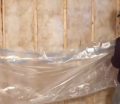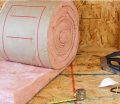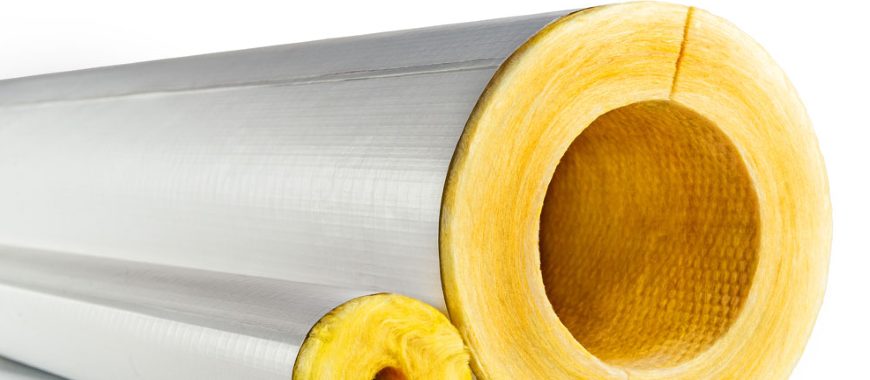
Molded fiberglass insulation Owens Corning is designed to provide excellent thermal and acoustic performance in various applications. This product line features molded fiberglass insulation that offers superior durability and energy efficiency. The key advantages of Owens Corning’s molded fiberglass insulation include its high R-value, which enhances thermal resistance and helps maintain consistent temperatures. It is also engineered to resist moisture and provide effective soundproofing, making it suitable for both residential and commercial use. The insulation’s molded form ensures precise fitting and easy installation, improving overall performance and reliability. In contrast to old fiberglass insulation, which typically comes in batt or roll form and requires more effort for customization and installation, molded fiberglass insulation is designed for faster and more precise installation. With its robust construction and performance benefits, molded fiberglass insulation from Owens Corning is a reliable choice for effective insulation solutions. Molded fiberglass insulation offers thermal and acoustic performance, insulating pipes from -20°F to 1000°F, reducing heat loss, and enabling faster installation.
What is Molded Fiberglass Insulation?
Molded fiberglass insulation is a specially designed material created from inorganic glass fibers bonded together using a high-density resin. The process results in durable and highly efficient insulation that is molded to fit specific shapes and structures. This type of insulation is widely used in various industries because it provides excellent thermal resistance, soundproofing, and energy efficiency.
Molded fiberglass insulation is commonly used in applications where pipes, ducts, and other equipment require protection from heat loss or gain. By forming the fiberglass into precise shapes, such as FRP pipe segments, it allows for easy installation and a snug fit that ensures optimal performance. The insulation not only keeps energy consumption in check but also prevents unwanted noise transmission, making it an essential component in both commercial and residential settings.
Contact molded FRP pipe is a corrosion-resistant pipe made from fiberglass-reinforced plastic, produced through hand lay-up or spray-up processes for durability and versatility in industrial applications.
At GangLong Fiberglass, we offer a wide range of molded fiberglass insulation products that cater to diverse project needs, from industrial installations to home applications.
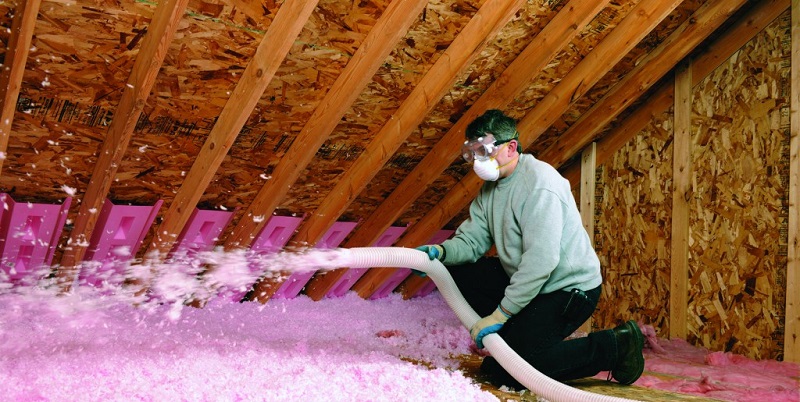
Molded Fiberglass Insulation R Value
The R-value of molded fiberglass insulation is a critical factor in determining its effectiveness in managing thermal performance. This value measures the material’s resistance to heat flow; a higher R-value indicates better insulation. Molded fiberglass insulation is designed to offer excellent thermal resistance, making it a preferred choice for many building applications.
The R-value of molded fiberglass insulation typically ranges from 3.0 to 4.0 per inch of thickness. This means that for each inch of insulation, the material provides a resistance level that helps to minimize heat transfer between the interior and exterior environments. For instance, a 3-inch thickness of molded fiberglass insulation with an R-value of 3.5 per inch would have a total R-value of 10.5, significantly improving the energy efficiency of a building.
The effectiveness of molded fiberglass insulation in maintaining temperature is influenced by its ability to trap air within its fibers. This trapped air acts as a thermal barrier, reducing the amount of heat that escapes or enters through walls, ceilings, and floors. Consequently, molded fiberglass insulation helps in stabilizing indoor temperatures, which can lead to reduced heating and cooling costs.
In high-temperature environments, molded fiberglass insulation performs well due to its ability to withstand heat without degrading. It maintains its structural integrity and insulating properties even under elevated temperatures, making it suitable for applications like industrial equipment and high-temperature piping.
Conversely, in low-temperature environments, molded fiberglass insulation provides reliable performance by preventing heat loss. It is particularly effective in cold climates where maintaining indoor warmth is crucial. The insulation’s high R-value ensures that less heat escapes from the building, which can enhance comfort and reduce the load on heating systems.
Overall, the R-value of molded fiberglass insulation plays a vital role in its performance. By offering high resistance to heat flow, molded fiberglass insulation helps in improving energy efficiency, reducing operational costs, and maintaining a comfortable indoor environment across various temperature conditions.
The Key of Molded Fiberglass Insulation R Value
The R-value is a critical factor when evaluating molded fiberglass insulation, as it measures the material’s ability to resist heat flow. Higher R-values indicate better insulation performance, making it essential for maintaining temperature control in various environments. Molded fiberglass insulation excels in providing superior thermal resistance by trapping air within its dense fibrous structure, creating an effective barrier against heat loss in cold climates and heat gain in warmer ones.
One of the key advantages of molded fiberglass insulation is its flexibility in achieving specific R-values based on the application. Thicker insulation generally offers a higher R-value, which is ideal for projects requiring maximum energy efficiency, such as industrial piping, HVAC systems, and refrigeration units. Additionally, its ability to mold around pipes, ducts, and other equipment ensures a continuous thermal barrier, enhancing overall performance.
When choosing molded fiberglass insulation, it is important to consider the required R-value based on your specific needs. For example, high-temperature industrial applications may require higher R-values for better thermal protection, while residential buildings in moderate climates may need lower R-values for sufficient insulation. GangLong Fiberglass offers a range of molded fiberglass insulation products with customizable R-values, ensuring the right fit for every project and helping to maximize energy savings.
Molded Fiberglass Insulation for Energy Efficiency and Soundproofing
In addition to its thermal properties, molded fiberglass insulation also offers excellent soundproofing capabilities. This makes it ideal for environments where noise reduction is important, such as HVAC systems, mechanical rooms, and industrial facilities. By absorbing sound waves, molded fiberglass insulation helps create quieter, more comfortable environments.
The dense structure of molded fiberglass insulation is highly effective at blocking airborne sound and reducing vibration. In HVAC systems, for example, this insulation helps minimize the noise generated by air moving through ducts, making it an important component in maintaining a peaceful indoor environment. In industrial settings, molded fiberglass insulation can be used to reduce noise from machinery, providing a quieter work environment for employees.
The soundproofing properties of molded fiberglass insulation are particularly valuable in buildings where noise control is a priority, such as hospitals, schools, and office buildings. By incorporating molded fiberglass insulation into these structures, building owners can create more comfortable spaces that promote productivity and well-being.
At GangLong Fiberglass, we offer molded fiberglass insulation products that provide both thermal and soundproofing benefits, ensuring that your project meets the highest standards of energy efficiency and noise control.
Molded Fiberglass Insulation and Fiberglass Pipe Insulation
Molded Fiberglass Insulation
Molded fiberglass insulation is a high-density, resin-bonded material designed to provide superior thermal and acoustic performance in a variety of applications. It is commonly used in industrial settings and commercial buildings for insulating equipment, ducts, and pipes. Molded fiberglass insulation is made from inorganic glass fibers and is molded into pre-formed shapes to fit specific needs. It is effective in temperature ranges from -20°F to 1000°F, offering excellent heat resistance and reducing heat loss.
Fiberglass Pipe Insulation
Fiberglass pipe insulation is specifically designed for use on pipes, offering an efficient way to prevent heat loss, reduce energy consumption, and protect against temperature fluctuations. It is typically available in flexible rolls or pre-formed shapes, making installation easier. Fiberglass pipe insulation is highly effective in protecting hot and cold pipes, reducing condensation, and preventing freezing in colder climates. Like molded fiberglass insulation, it is made from high-quality glass fibers but is tailored for pipe applications.
Similarities Between Molded Fiberglass Insulation and Fiberglass Pipe Insulation
Both molded fiberglass insulation and fiberglass pipe insulation are made from high-density, resin-bonded inorganic glass fibers, offering similar benefits in terms of thermal insulation. They both excel in reducing heat loss, improving energy efficiency, and providing protection from temperature fluctuations. Additionally, both insulation types are resistant to fire, mold, and moisture, making them suitable for a range of environments. They are easy to install and provide long-lasting performance, making them ideal choices for residential, commercial, and industrial insulation needs.
Differences Between Molded Fiberglass Insulation and Fiberglass Pipe Insulation
The primary difference between molded fiberglass insulation and fiberglass pipe insulation lies in their specific applications. Molded fiberglass insulation is designed for a wide range of industrial and commercial insulation needs, including equipment, ducts, and various surfaces. In contrast, fiberglass pipe insulation is specifically tailored for pipes, offering a snug fit for both hot and cold service pipes. Molded fiberglass insulation generally comes in larger, pre-molded shapes to cover broader areas, while fiberglass pipe insulation is available in rolls or pre-formed pipe segments. The two also differ in installation complexity, with fiberglass pipe insulation often being simpler to install due to its specific design for pipe coverage.
Effective Ways to Cover Exposed Fiberglass Insulation at Home
The Key of Molded Fiberglass Insulation for Various Applications
Molded fiberglass insulation is versatile and can be applied to a wide variety of applications, ranging from HVAC systems to industrial piping and residential construction. Its ability to be molded into specific shapes makes it ideal for use in challenging installations where standard insulation products may not provide adequate coverage. The precision molding ensures that the insulation fits tightly around pipes, ducts, and equipment, providing a continuous thermal barrier.
In addition to its thermal properties, molded fiberglass insulation also offers soundproofing capabilities, which makes it useful in environments where noise reduction is a priority. It can be used in buildings, mechanical rooms, and industrial facilities to dampen sound and create quieter environments.
GangLong Fiberglass provides molded fiberglass insulation solutions tailored to meet the needs of various industries, ensuring that our products deliver optimal performance in all applications. Whether for residential, commercial, or industrial use, our molded fiberglass insulation is designed to provide reliable protection and efficiency.
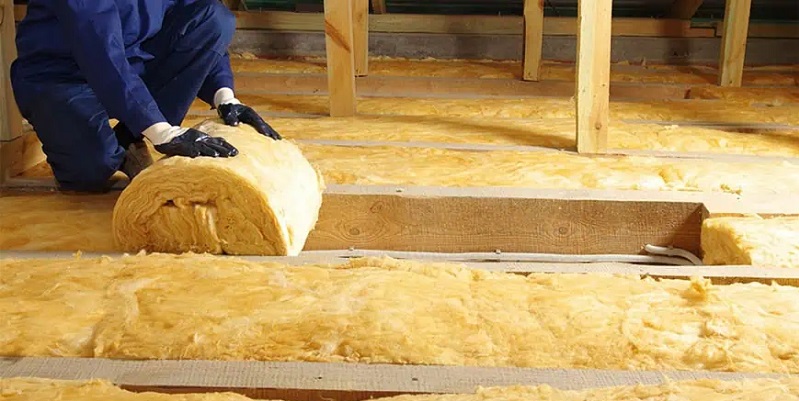
Factors That Influence Molded Fiberglass Insulation Cost
The cost of molded fiberglass insulation can vary widely depending on several key factors. Understanding these factors is essential for budgeting and ensuring that the insulation meets the project’s needs effectively. This section will delve into the primary elements that influence the cost of molded fiberglass insulation, including installation complexity, product customization, and insulation thickness.
The R-value is one of the most critical factors when evaluating molded fiberglass insulation. R-value measures the insulation’s ability to resist heat flow, with higher R-values indicating better insulating properties. Molded fiberglass insulation is designed to offer superior thermal performance by trapping air within the fibrous structure, creating an effective barrier against heat loss in colder environments and heat gain in warmer climates.
Molded fiberglass insulation can be customized to achieve specific R-values based on the application. For example, thicker insulation offers a higher R-value, which is ideal for projects that demand maximum energy efficiency. The ability to mold the insulation around pipes, ducts, and other equipment ensures a continuous and uninterrupted thermal barrier, further enhancing the insulation’s overall effectiveness.
Understanding the importance of R-value helps in selecting the right insulation thickness for different applications. GangLong Fiberglass offers a variety of molded fiberglass insulation products with tailored R-values to meet diverse project requirements, ensuring optimal energy savings.
How about Molded Fiberglass Insulation Cost?
The cost of molded fiberglass insulation depends on several factors, including the size and thickness of the insulation, as well as the complexity of the application. Thicker insulation with higher R-values tends to be more expensive due to its superior thermal properties. Additionally, custom-molded pieces designed to fit specific shapes or structures can add to the overall cost.
However, while the initial cost of molded fiberglass insulation may vary depending on the project, the long-term energy savings it provides often outweigh the upfront investment. By reducing heat loss and improving energy efficiency, molded fiberglass insulation can lead to significant cost savings over time. It also requires less maintenance compared to other insulation materials, which adds to its overall value.
GangLong Fiberglass offers competitive pricing on best fiberglass insulation, providing high-quality products at affordable rates. Our focus is on delivering solutions that offer the best return on investment by improving energy efficiency and reducing operating costs for our clients.
Molded Fiberglass Insulation Price Breakdown
The cost of molded fiberglass insulation can vary significantly depending on several factors, including the material type, insulation thickness, manufacturing process, and the complexity of the application. Understanding these pricing factors can help you choose the most cost-effective solution for your project.
One of the primary factors influencing the price of molded fiberglass insulation is the thickness of the material. Thicker insulation tends to cost more because it provides higher thermal resistance (R-value) and requires more material to manufacture. For projects that demand significant thermal protection, such as industrial piping systems or HVAC ducts, the added cost of thicker insulation can be justified by the long-term energy savings it provides.
The density of the insulation also plays a role in determining the price. High-density molded fiberglass insulation offers better performance in terms of soundproofing and thermal resistance but may come at a higher cost compared to lower-density alternatives. This is because the manufacturing process for high-density insulation is more involved and requires specialized equipment and materials.
Customization is another important pricing factor. Many molded fiberglass insulation products are pre-molded to fit standard pipe sizes and shapes, which helps keep costs down. However, some projects require custom-molded insulation to fit unique structures or irregular shapes. In these cases, the price of the insulation may increase due to the additional time and resources required to produce custom pieces.
GangLong Fiberglass offers competitive pricing on a wide range of molded fiberglass insulation products. Our offerings include various thicknesses and densities, ensuring that we can provide cost-effective insulation solutions for both small-scale and large-scale projects.
Key Factors
Installation Complexity
The complexity of installing molded fiberglass insulation plays a significant role in determining its overall cost. Installation complexity can arise from various factors such as the size and type of the project, the accessibility of the areas to be insulated, and the specific requirements of the insulation application.
For residential applications, installing molded fiberglass insulation is generally straightforward. However, in cases where insulation needs to be fitted in hard-to-reach areas or around complex structures, the installation process can become more challenging and time-consuming. This complexity often leads to higher labor costs, which can significantly impact the overall expense.
In industrial or commercial settings, installation complexity increases due to larger and more intricate systems. Large-scale ductwork, complex piping networks, or specialized equipment may require additional preparation and handling, further contributing to the cost. Professional installation may be necessary to ensure that the insulation is applied correctly, which can add to the total expenditure.
Product Customization
Customization is another important factor that influences the cost of molded fiberglass insulation. Standard sizes and shapes of insulation are typically less expensive compared to custom solutions. When a project requires molded fiberglass insulation that deviates from standard dimensions or needs specific configurations, the cost can increase due to the additional manufacturing and design work involved.
Custom molded fiberglass insulation is often needed for unique applications, such as specialized equipment or non-standard piping sizes. These custom solutions ensure that the insulation fits perfectly and performs effectively, but they come at a higher price. Customization may include specific thicknesses, shapes, or pre-cut sections to match the project’s exact requirements.
Insulation Thickness
The thickness of molded fiberglass insulation directly affects its cost. Generally, thicker insulation provides better thermal resistance and higher R-values, which can lead to improved energy efficiency. However, thicker insulation materials are also more expensive due to the increased amount of raw material required.
For residential applications, the thickness of molded fiberglass insulation often ranges from 1 to 3 inches, depending on the specific needs of the building. Thicker insulation is commonly used in areas requiring higher thermal performance, such as exterior walls or attics. In industrial and commercial settings, thicker insulation may be necessary for large pipes, ducts, or high-temperature applications. The cost of thicker molded fiberglass insulation will be higher compared to thinner options, reflecting the added material and manufacturing costs.
Quantity of Insulation Required
The total quantity of molded fiberglass insulation needed for a project also affects its overall cost. Larger projects with extensive insulation requirements will naturally incur higher costs. This factor is influenced by the size of the area to be insulated, the number of units or sections required, and the specific application needs.
For example, insulating a large commercial building or industrial facility will require a significant amount of molded fiberglass insulation, leading to increased material and installation costs. Conversely, smaller residential projects will have lower overall costs due to the reduced quantity of insulation needed.
Transportation and Handling
Transportation and handling costs can also contribute to the overall expense of molded fiberglass insulation. Larger quantities or custom-sized insulation may require special handling and shipping arrangements, which can add to the cost. Additionally, the distance from the manufacturer or supplier to the project site can impact transportation costs.
In some cases, purchasing insulation from a local supplier can reduce transportation costs, while ordering from distant suppliers may increase the expense. Proper handling is essential to prevent damage to the insulation during transit and storage, ensuring that it performs as expected once installed.
Long-Term Performance and Maintenance
While not an immediate cost factor, the long-term performance and maintenance of molded fiberglass insulation can influence overall expenses. High-quality insulation with superior durability and performance may have a higher initial cost but can lead to savings over time due to reduced energy consumption and fewer maintenance requirements.
Choosing molded fiberglass insulation that offers excellent long-term performance can be a cost-effective decision in the long run. It is important to consider the potential benefits of investing in high-quality insulation that will provide reliable performance and contribute to overall energy savings.
Where to Find Molded Fiberglass Insulation for Sale
Molded fiberglass insulation can be purchased from various sources, including manufacturers, distributors, and online platforms. However, it’s essential to buy from reputable suppliers to ensure you’re getting a high-quality product that will deliver optimal performance and longevity. Poor-quality insulation can lead to inefficiencies, higher energy costs, and even damage to the equipment it is designed to protect.
At GangLong Fiberglass, we specialize in molded fiberglass insulation crafted from high-density, resin-bonded inorganic glass fibers. Our products are durable, energy-efficient, and designed to provide superior thermal protection and soundproofing for a range of applications, from residential to commercial and industrial use. We offer both standard sizes and custom-molded insulation solutions tailored to meet the unique requirements of each project.
By choosing GangLong Fiberglass, you gain access to premium insulation products backed by our commitment to quality and customer satisfaction. Whether you need molded fiberglass insulation for a specific project or ongoing supply, we provide reliable and efficient solutions. Contact us directly to discuss your insulation needs and receive a personalized quote.
Benefits of using fiberglass insulation with vapor barrier in homes
Available Molded Fiberglass Insulation Sizes
Molded fiberglass insulation is known for its versatility and effectiveness in various applications, from residential buildings to large industrial projects. One of the key aspects of this insulation material is the range of sizes available, which makes it suitable for different needs and environments. Understanding the different sizes of molded fiberglass insulation helps in selecting the right type for specific applications, ensuring optimal performance and efficiency.
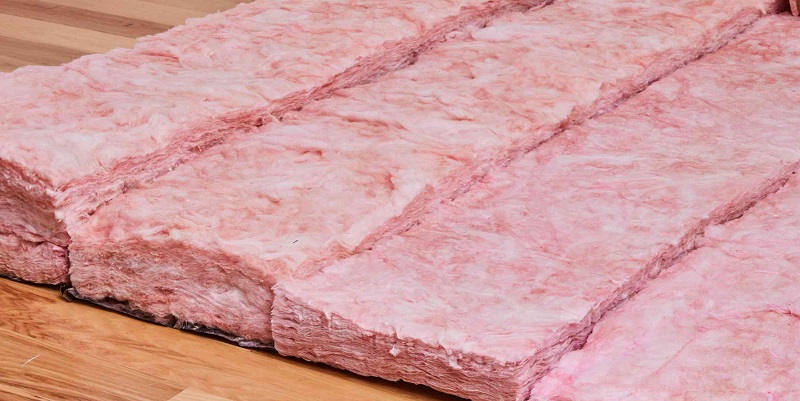
Benefits of Proper Sizing
Choosing the correct size of molded fiberglass insulation is essential for maximizing its benefits. Properly sized insulation ensures complete coverage and effective thermal resistance, leading to improved energy efficiency and comfort. For residential applications, this means reduced heating and cooling costs, while in industrial settings, it contributes to better operational efficiency and cost savings.
Molded Fiberglass Insulation Sizes for Every Application
Molded fiberglass insulation is available in a variety of sizes, making it highly adaptable for different applications, from small residential projects to large industrial systems. The insulation comes in pre-molded segments designed to fit standard pipe diameters, ensuring a precise fit without the need for adjustments. These pre-molded segments are commonly available in convenient lengths that are easy to handle and install, providing seamless coverage for pipes, ducts, and equipment.
For more complex or non-standard applications, custom sizes can be manufactured to meet specific project requirements. This customization allows molded fiberglass insulation to accommodate irregular shapes, large industrial equipment, HVAC systems, and more, providing optimal coverage and improving insulation performance. The versatility in sizes ensures that molded fiberglass insulation is suitable for both new construction and retrofit projects, allowing for seamless integration into existing systems.
At GangLong Fiberglass, we offer a comprehensive range of molded fiberglass insulation sizes tailored to meet the unique needs of our clients. Whether you need standard pre-molded segments or custom-molded pieces for complex installations, we provide reliable, durable, and efficient insulation solutions for residential, commercial, and industrial applications. Contact us to discuss your requirements and find the perfect insulation for your project.
Range of Sizes for Residential Applications
For residential applications, molded fiberglass insulation typically comes in several standard sizes to accommodate various needs. These sizes are designed to fit common building structures and provide efficient thermal insulation. Residential insulation often includes:
- Pipe Insulation: Molded fiberglass insulation for pipes is available in various diameters to fit standard pipe sizes. Common sizes include 1-inch, 2-inch, and 3-inch diameters, with lengths typically ranging from 3 to 6 feet. This size range ensures that insulation can be applied to both small and large pipes, helping to prevent heat loss and protect against freezing.
- Duct Insulation: For HVAC systems, molded fiberglass insulation is available in sizes that fit standard duct dimensions. Typical sizes include 1-inch and 2-inch thicknesses with widths and lengths tailored to fit rectangular and round ducts. This insulation helps maintain temperature control within the ductwork and enhances the overall efficiency of the heating and cooling systems.
- Blanket Insulation: Residential applications also use blanket insulation likes Fiberglass sheets, which comes in rolls or batts. Sizes generally include widths of 15 to 24 inches and lengths of up to 48 feet. This type of insulation is used for wall cavities, attics, and other areas where flexible installation is needed.
Sizes for Industrial and Commercial Applications
In industrial and commercial settings, molded fiberglass insulation is available in larger and more specialized sizes to meet the demands of extensive projects. These sizes include:
- Custom Pipe Insulation: For large-scale industrial pipes, molded fiberglass insulation can be customized to fit various diameters beyond the standard sizes. These can range from 4 inches to several feet in diameter, accommodating the insulation needs of large pipes used in manufacturing, chemical processing, and other industrial applications.
- Large-Diameter Duct Insulation: Industrial and commercial HVAC systems often require insulation for larger ductwork. Molded fiberglass insulation for these applications comes in thicker profiles and larger dimensions, including thicknesses up to 4 inches and widths that can cover entire sections of ductwork. This provides excellent thermal protection and energy efficiency in demanding environments.Additionally, fiberglass profiles play a crucial role in reinforcing these insulation systems. Fiberglass profiles, with their superior strength and durability, are often used to support and shape large sections of insulation, ensuring stability and long-lasting performance in industrial settings.
- Specialty Insulation: In some cases, molded fiberglass insulation is produced in custom sizes and shapes to fit unique applications, such as specialized equipment, tanks, and large storage containers. These custom solutions ensure that every part of an industrial or commercial system is insulated effectively.
Factors Affecting the Size Selection of Molded Fiberglass Insulation
Flexibility and Customization
One of the advantages of molded fiberglass insulation is its flexibility in size and shape, which allows for customization based on specific project requirements. Manufacturers like GangLong Fiberglass offer options for bespoke sizes and configurations, ensuring that insulation can be tailored to fit any application. This flexibility is particularly useful for projects with non-standard dimensions or complex structures.
Installation Considerations
When selecting molded fiberglass insulation sizes, it is important to consider the installation process. For standard sizes, installation is generally straightforward, with insulation pieces fitting into place easily. For custom sizes or large-scale projects, professional installation may be required to ensure proper application and performance.
Additionally, the installation of molded fiberglass insulation should account for factors such as the environment, temperature fluctuations, and potential physical stresses. Proper handling and installation are crucial to maintaining the integrity and effectiveness of the insulation over time.
The Key of Molded Fiberglass Insulation Installation
Installing molded fiberglass insulation is a relatively straightforward process, thanks to its pre-molded design and flexibility. For standard applications, such as insulating pipes or ducts, the insulation is often provided in segments that are easy to handle and fit securely around the equipment being insulated.
One of the advantages of molded fiberglass insulation is its ability to be installed without the need for extensive modifications or adjustments. The pre-molded segments are designed to fit tightly around standard pipe sizes, creating a seamless insulation barrier. For custom applications, the insulation can be tailored to fit specific shapes, ensuring that the installation process is smooth and efficient.
When installing molded fiberglass insulation, it is important to ensure that the insulation is properly secured to prevent gaps or loose sections. This will help maintain the insulation’s thermal and soundproofing properties, ensuring that it performs as intended. For industrial applications, additional measures may be required to protect the insulation from environmental factors, such as moisture or extreme temperatures.
Fiberglass Insulation Prices: Factors That Influence Cost
FAQs about Molded Fiberglass Insulation
Fiberglass insulation can be perceived as expensive due to several factors. Firstly, the cost of raw materials, manufacturing processes, and advanced technology used to create high-performance fiberglass can contribute to its price. Additionally, the cost of installation can also add to the overall expense, especially if professional services are required.
Another factor influencing the cost is the insulation’s effectiveness and long-term benefits. Fiberglass insulation offers superior thermal performance, energy efficiency, and durability, which can result in significant savings on energy bills over time. The initial investment in high-quality fiberglass insulation can pay off through reduced heating and cooling costs and improved comfort.
Finally, the cost of fiberglass insulation can vary based on factors such as thickness, density, and brand. While it may be more expensive compared to some other insulation materials, its benefits in terms of performance and energy efficiency often justify the investment.
The term “insulation” encompasses a wide range of materials used to reduce heat transfer and improve energy efficiency. Fiberglass insulation is one specific type of insulation material. It is made from fine glass fibers and is known for its excellent thermal and acoustic properties. Fiberglass insulation works by trapping air in its fibers, which slows the transfer of heat and reduces noise.
Other types of insulation materials include foam board, spray foam, cellulose, and mineral wool, each with its own unique properties and applications. For example, foam board insulation provides a rigid, high-R-value option, while spray foam insulation expands on application to fill gaps and cracks.
The main differences between fiberglass and other types of insulation lie in their material composition, installation methods, and performance characteristics. For instance, fiberglass insulation is generally more cost-effective and easier to install, while materials like spray foam offer superior air-sealing properties.
SSL (Solid State Lighting) insulation refers to materials used in the context of solid-state lighting systems, such as LED lights. Unlike traditional insulation materials, SSL insulation is designed to manage and dissipate heat generated by high-efficiency lighting systems. It helps maintain the optimal operating temperature of LED fixtures, ensuring their longevity and performance. SSL insulation materials often include advanced thermal management compounds or engineered polymers that effectively transfer heat away from the lighting components. By using SSL insulation, the risk of overheating is reduced, which can extend the life of the lighting system and improve energy efficiency. In summary, SSL insulation is a specialized type of insulation tailored to meet the thermal management needs of modern lighting technologies.
Fiberglass insulation itself is not a food source for mold, but it can harbor mold if it becomes wet or exposed to high humidity. Mold needs moisture to grow, and fiberglass insulation can absorb water, especially when installed in areas with inadequate vapor barriers or where leaks are present. Once fiberglass insulation gets wet, it may retain moisture long enough for mold spores to settle and grow, leading to potential health issues like respiratory problems. If the insulation is only lightly dampened, it might dry out without mold growth, but if it’s saturated, it may need to be replaced. It’s crucial to ensure proper ventilation and address any water leaks promptly to prevent mold formation in fiberglass insulation.
Molded insulation typically refers to insulation materials that have been shaped or molded into specific forms to fit particular applications. In the context of molded fiberglass insulation, the term can sometimes refer to fiberglass insulation that has become moldy due to prolonged exposure to moisture. In such cases, the insulation may take on a “molded” appearance where mold colonies form and affect the fibers, potentially making the insulation ineffective and harmful to health. Molded insulation can also refer to pre-formed insulation products designed for specific spaces, such as pipes or HVAC ducts, made from materials like fiberglass, foam, or other substances. These products are designed to provide thermal resistance in a convenient, shaped form.
While fiberglass insulation has many benefits, such as being cost-effective and energy-efficient, there are a few reasons why it may not be the best choice for some situations. First, fiberglass can irritate the skin, eyes, and lungs when handled improperly, so protective gear is necessary during installation. Second, if it becomes wet, fiberglass insulation can lose its effectiveness and potentially harbor mold growth, especially in areas prone to moisture. Additionally, fiberglass is not the best option for soundproofing compared to materials like mineral wool. Lastly, it’s less eco-friendly than other materials like cellulose or spray foam, as it is energy-intensive to manufacture and may not be recyclable. If you live in a humid or flood-prone area, you might want to consider alternatives to fiberglass insulation.
Fiberglass insulation is generally considered affordable compared to other insulation materials. The cost typically ranges from $0.40 to $1.00 per square foot, depending on the thickness, R-value, and form (batt, roll, or blown-in). While it may not be the absolute cheapest, it offers a good balance of performance and cost-effectiveness. Compared to high-performance insulations like spray foam or polyiso, fiberglass is a much more budget-friendly option. However, the overall cost of insulation also depends on installation fees, which can vary. While fiberglass insulation offers a lower upfront cost, it may not provide the same long-term energy savings as more expensive alternatives like spray foam, especially in extreme climates or areas with high moisture levels.
The cheapest insulation option is typically fiberglass batt or roll insulation. It is widely available, easy to install, and offers a good balance of performance and cost. Prices usually range from $0.40 to $0.80 per square foot, making it the most economical choice for homeowners on a budget. Another inexpensive option is cellulose insulation, which can be made from recycled paper products, costing around $0.50 to $1.00 per square foot. However, while fiberglass is cheap, it may not always be the most efficient option in terms of R-value per inch or air sealing, especially in climates with extreme temperatures. For areas with high moisture, reflective foil insulation may also be a low-cost alternative.
If you find mold in your insulation, it’s important to act quickly to prevent further damage. First, identify the source of moisture—whether it’s a leaky pipe, roof, or condensation problem—and repair it to prevent future mold growth. For fiberglass insulation, if the mold growth is extensive, you may need to remove and replace the affected material. If the insulation is only lightly contaminated, you can clean it by vacuuming with a HEPA filter or using a mold-killing solution (like a diluted bleach mixture) to kill spores. However, fiberglass insulation that has been exposed to moisture for an extended period may lose its effectiveness and should be replaced entirely. After removing mold, ensure proper ventilation and consider using a dehumidifier in the affected area to keep moisture levels under control and prevent mold from returning.

As the editor of GangLong Fiberglass, I have years of experience and in-depth research, focusing on cable tray products, fiberglass solutions, and grille systems. I incorporate years of industry insights and practical experience into every content, committed to promoting the progress of the industry. At GangLong Fiberglass, my commitment is reflected in every product, from innovative cable trays to durable fiberglass solutions and sturdy grille systems. As an authoritative voice in the industry, my goal is to provide valuable information to professionals and businesses and promote forward-looking solutions.

